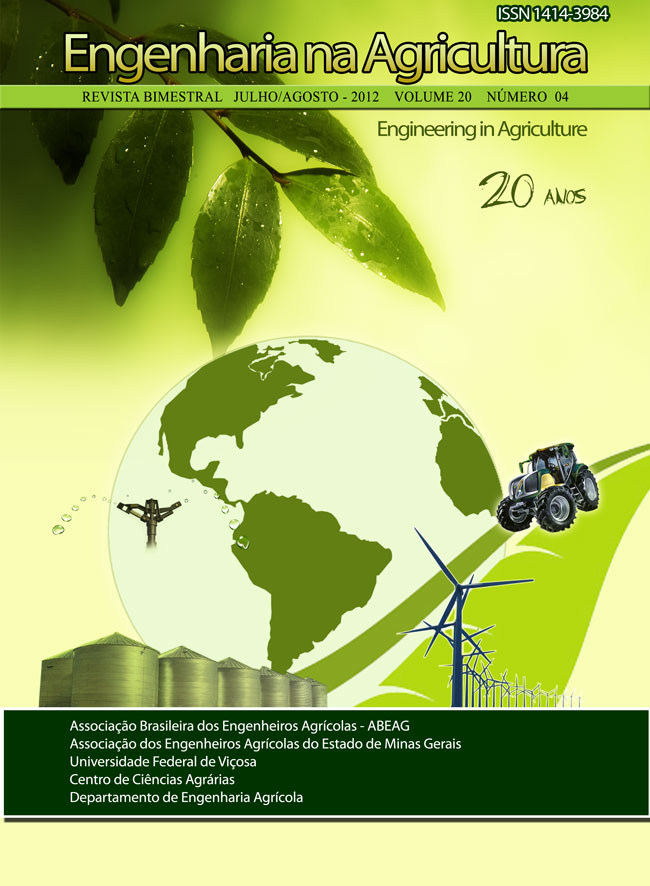POTENTIAL OF DRIFT RISK DURING SPRAYING PAPAYA CROP IS AFFECTED BY PRESSURE AND NOZZLE TYPE
DOI:
https://doi.org/10.13083/reveng.v20i4.272Keywords:
tecnologia de aplicação, Agrotóxicos, Tamanho de gotasAbstract
The characteristics of spray nozzles determine the coverage, control quantity and application uniformity. However, the drift is a major problem during spraying. This study evaluated drift during spraying papaya plantation as affected by pressure and spray nozzles in the Irrigated Perimeter of Russas - CE. The study was done in completely randomized block, in a factorial (7x5) design with 4 replications. The seven spray nozzle - hollow cone jet - JA-1, JA-5 and TVI, working at pressures: of 402 kPa or 1.402 kPa and the control tip J5-2 at the pressure of 666 kPa, were used at five heights above ground (2.0; 2.5; 3.0; 3.5 and 4.0 m). The drift was captured on water sensitive papers distributed on wooden towers. The drops were analyzed using the e-Sprinkle software, and after analysis of variance, the means were compared by Tukey test ( p = 0.05) using statistical software SAEG 9.0. All treatments showed great drift potential. The nozzle JA-1 at 1.402 kPa showed highest and the TVI at 402 kPa the lowest drift potential. In the height range evaluated, the drift in the extremes (2.0, 2.5 and 4.0 m) was greater than in the intermediate (3.0 and 3.5 m) heights.Downloads
Downloads
Published
How to Cite
Issue
Section
License
Authors who publish with this journal agree to the following terms:
The author(s) authorize(s) the publication of the text in the journal;
The author(s) ensure(s) that the contribution is original and unpublished and that it is not in the process of evaluation by another journal;
The journal is not responsible for the views, ideas and concepts presented in articles, and these are the sole responsibility of the author(s);
The publishers reserve the right to make textual adjustments and adapt texts to meet with publication standards.
From submission, the author is fully conceding the paper's patrimonial rights to the publication, but retaining the owner of its moral rights (authorship and paper's identification) according to Creative Commons Attribution-Noncommercial.








 Licensed by
Licensed by 